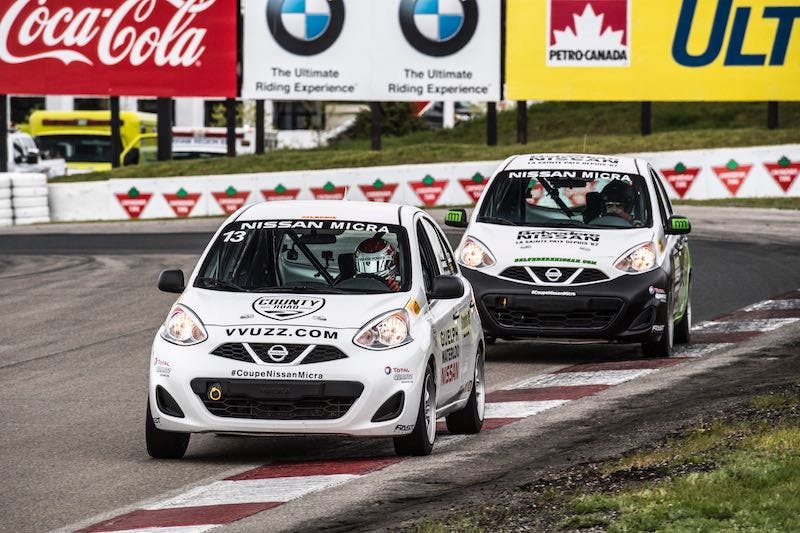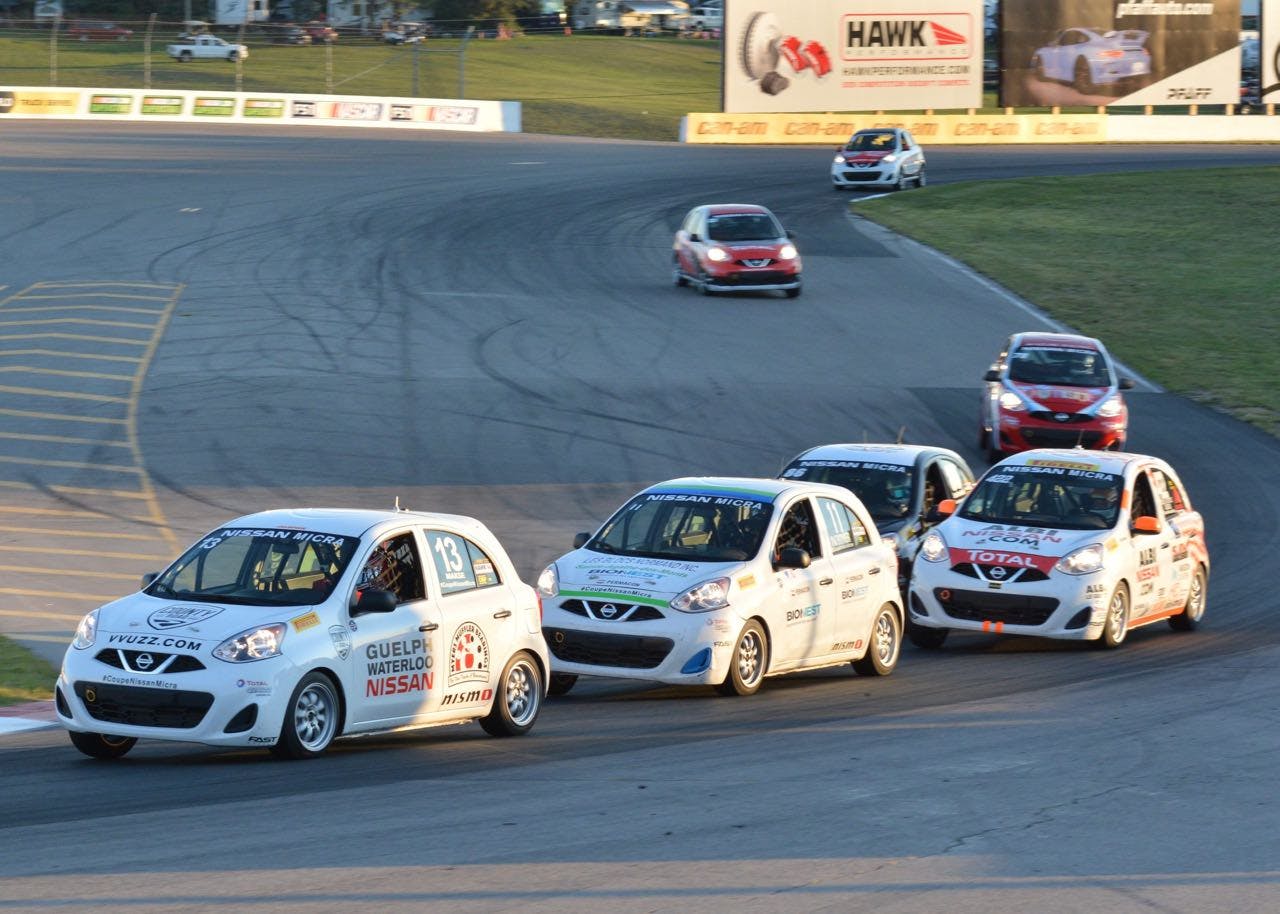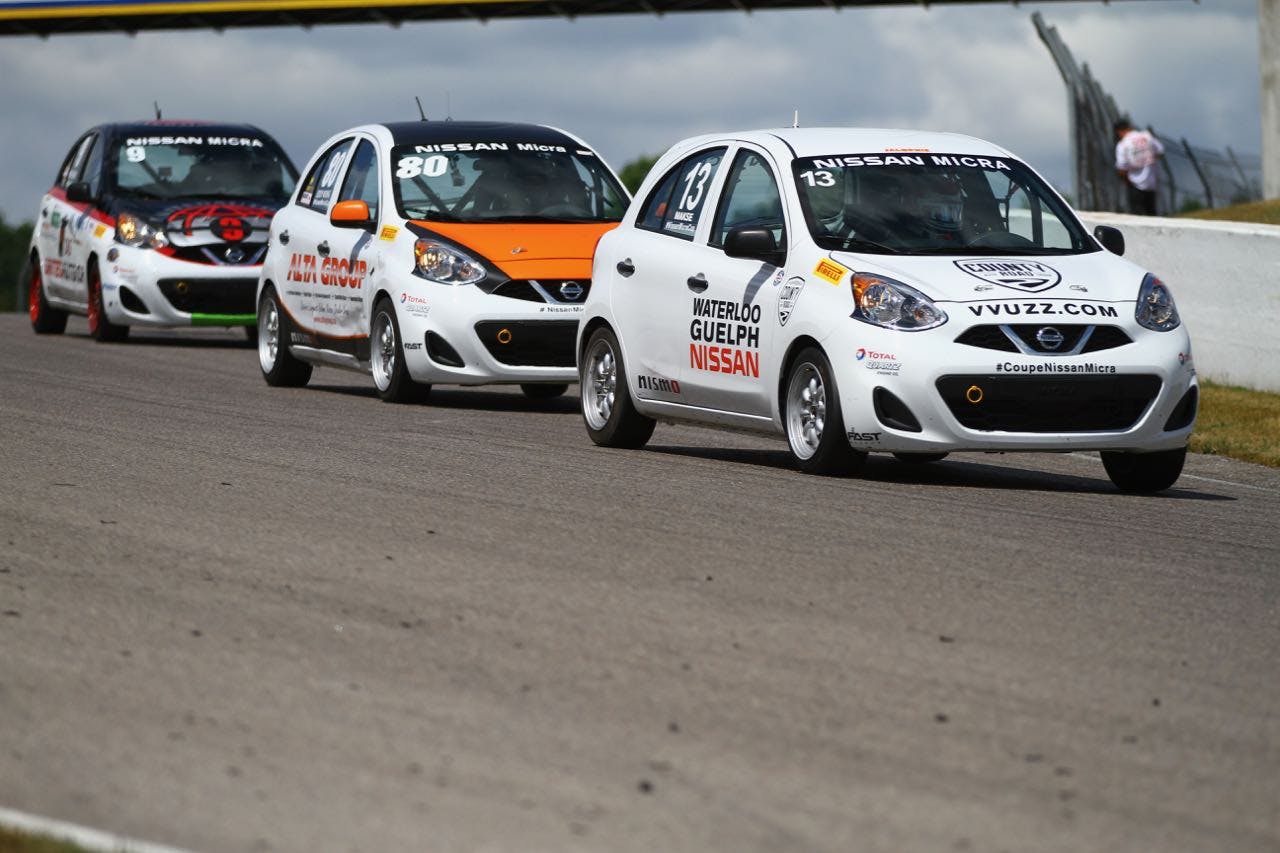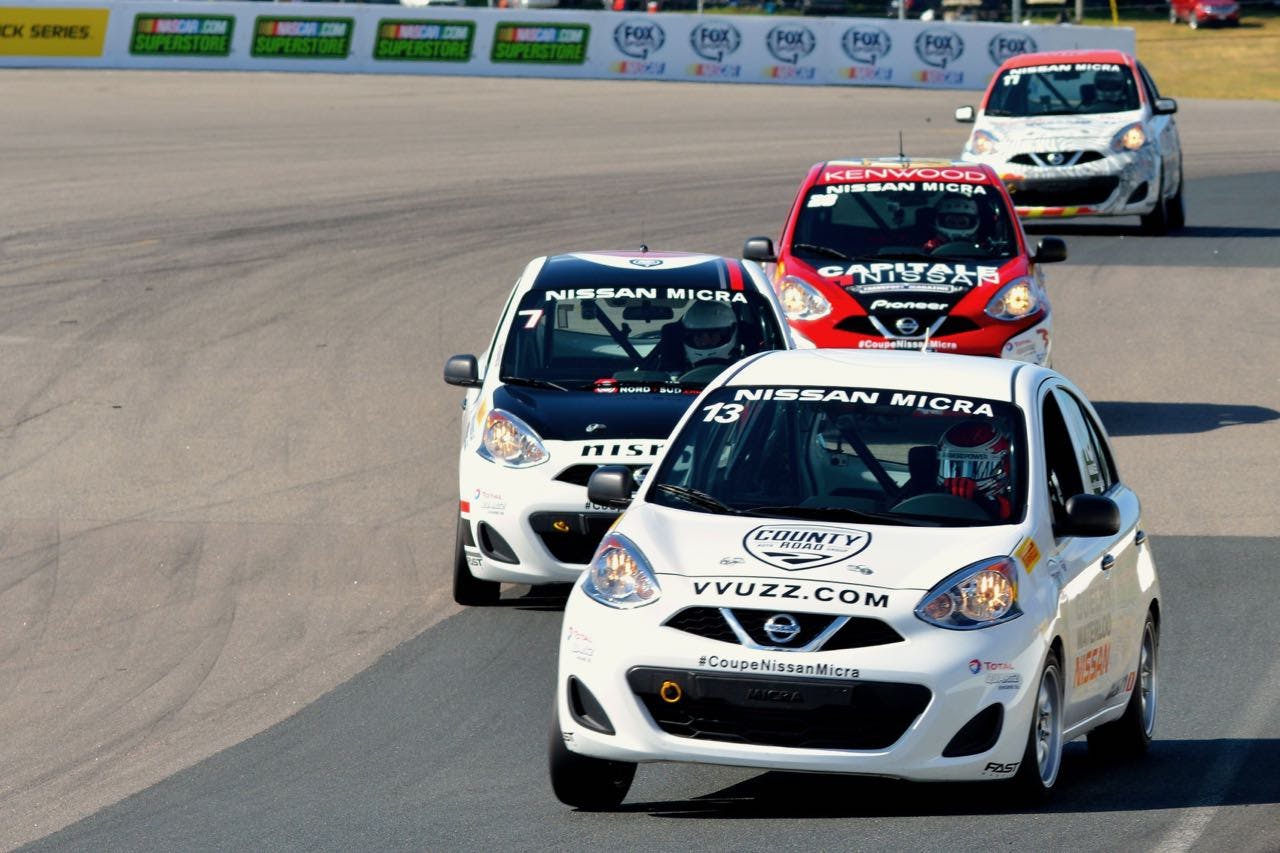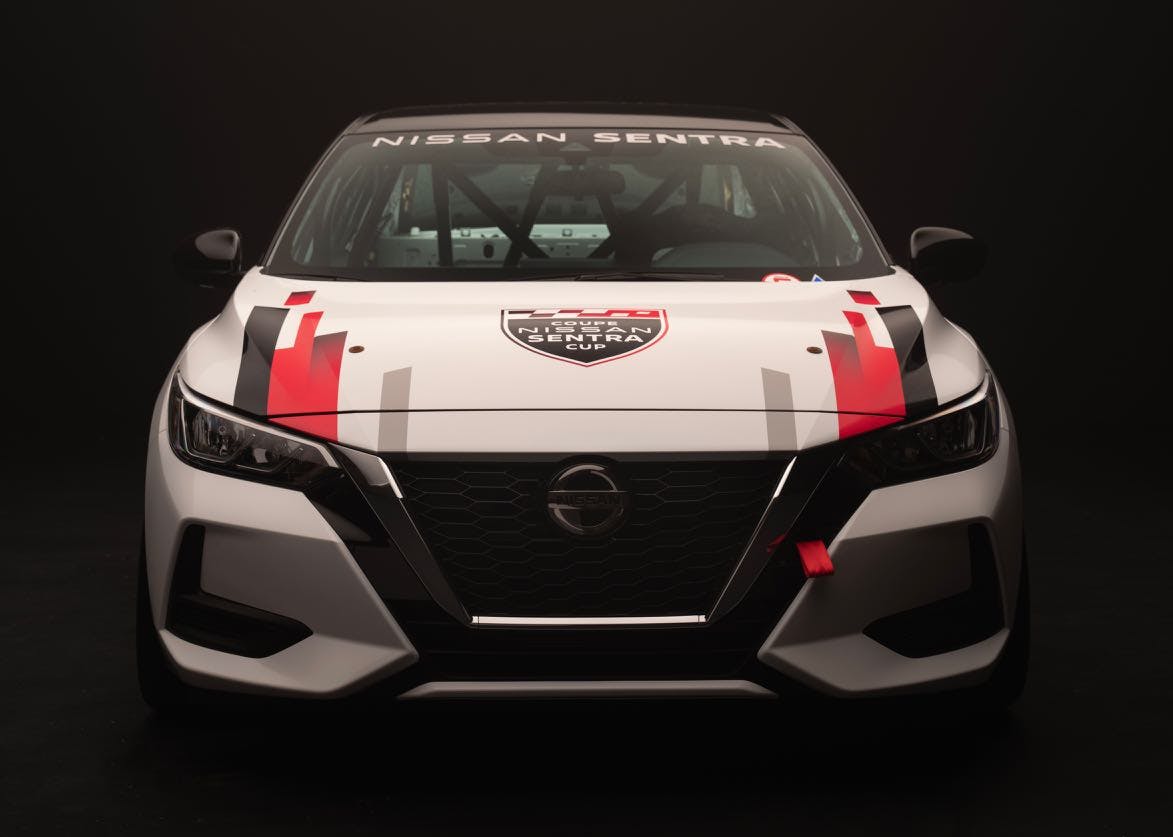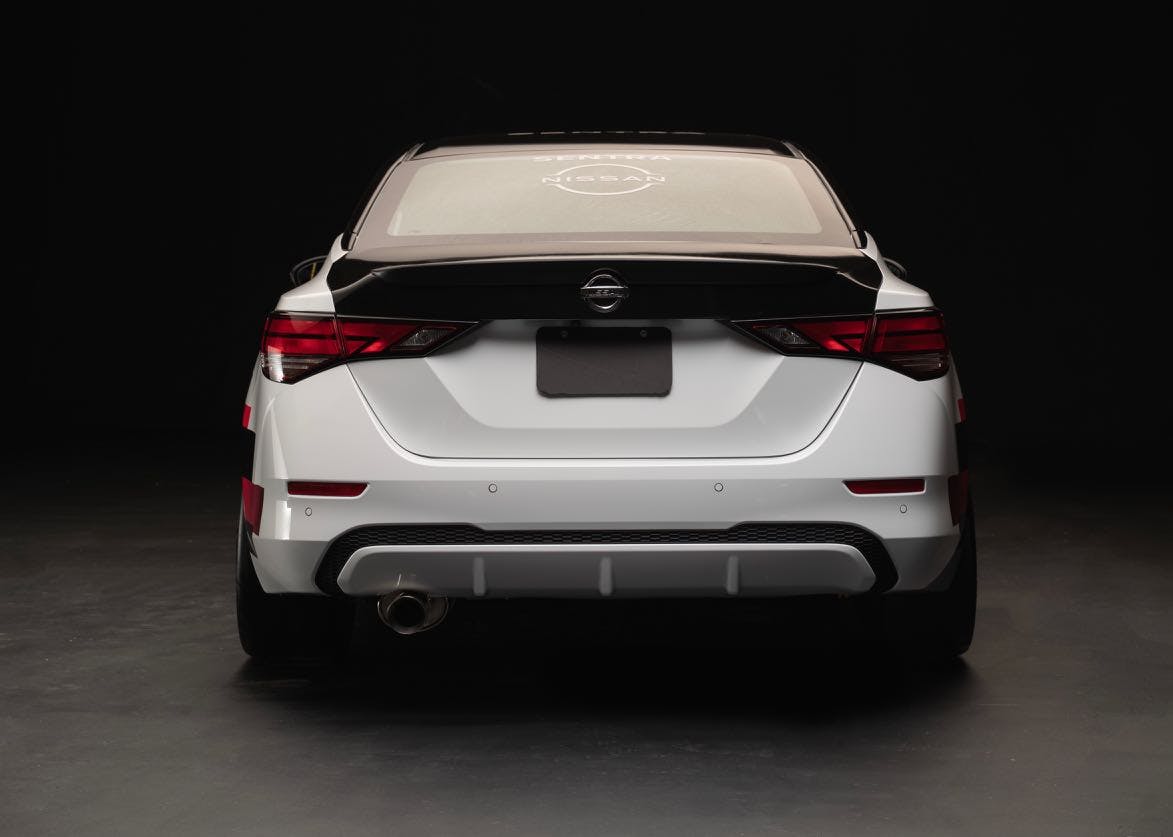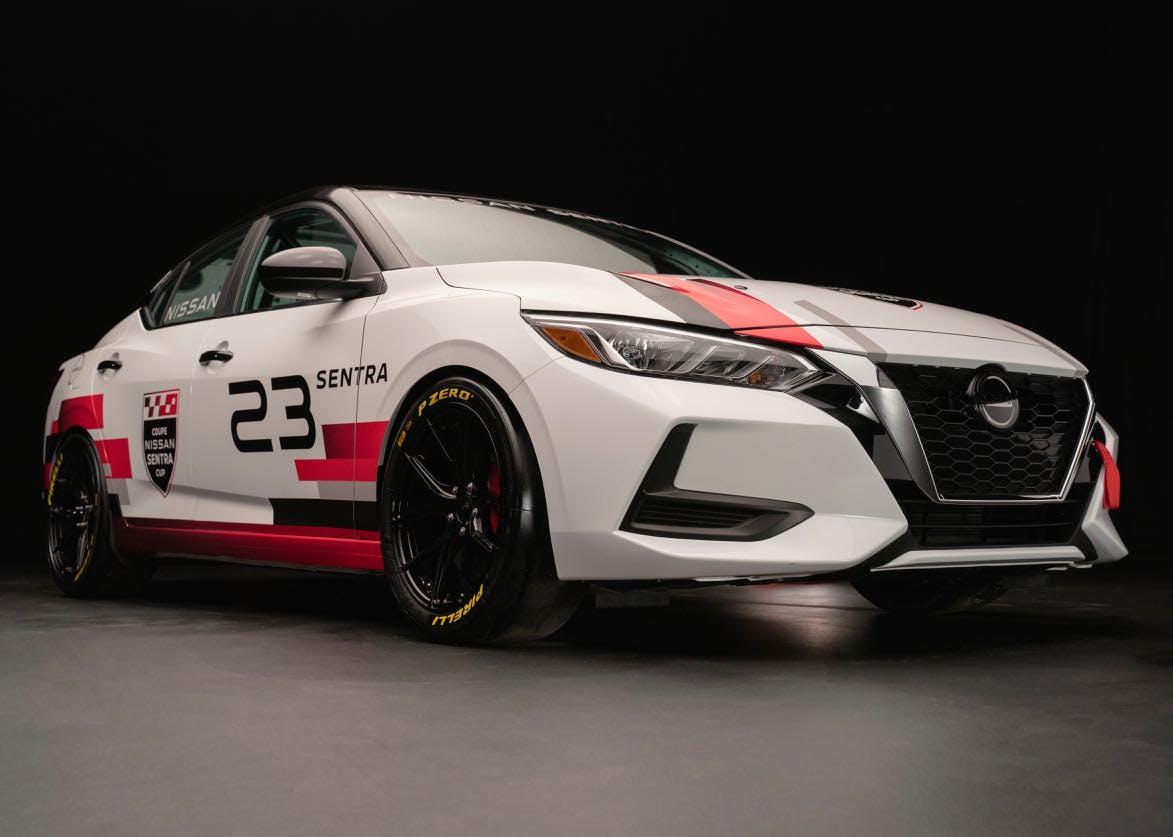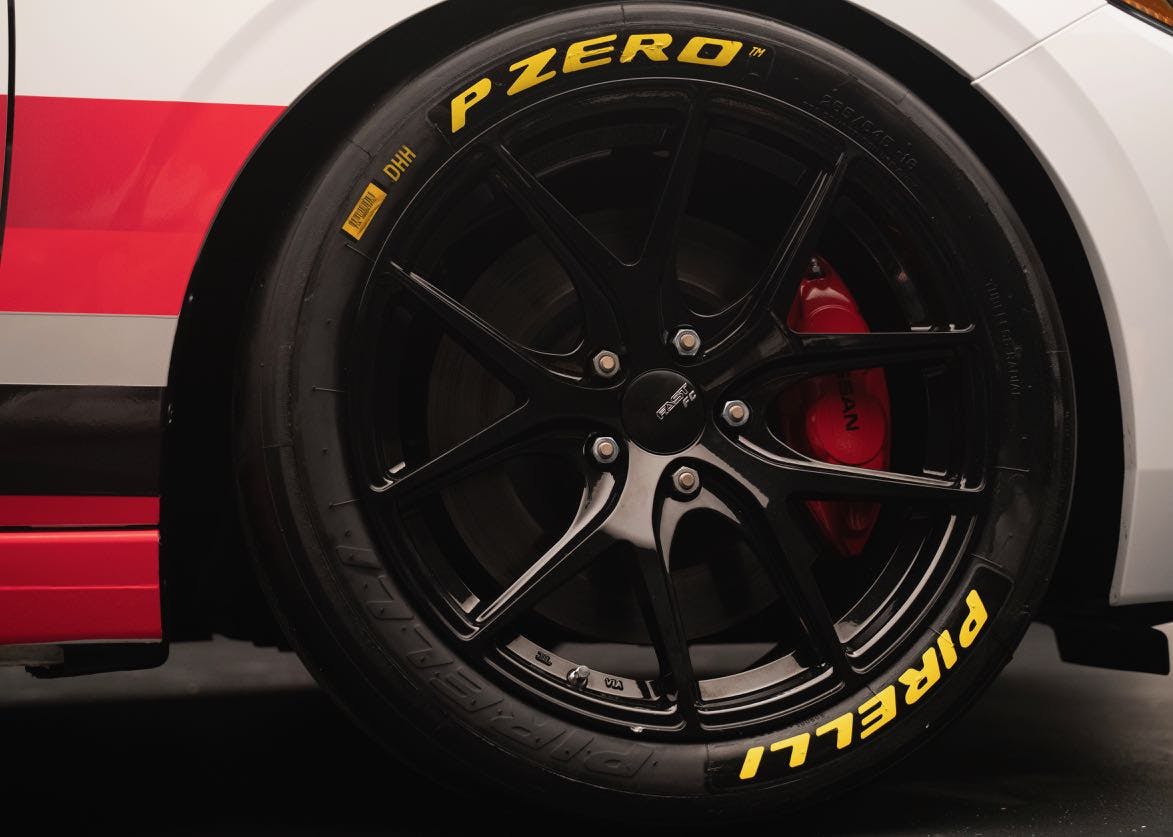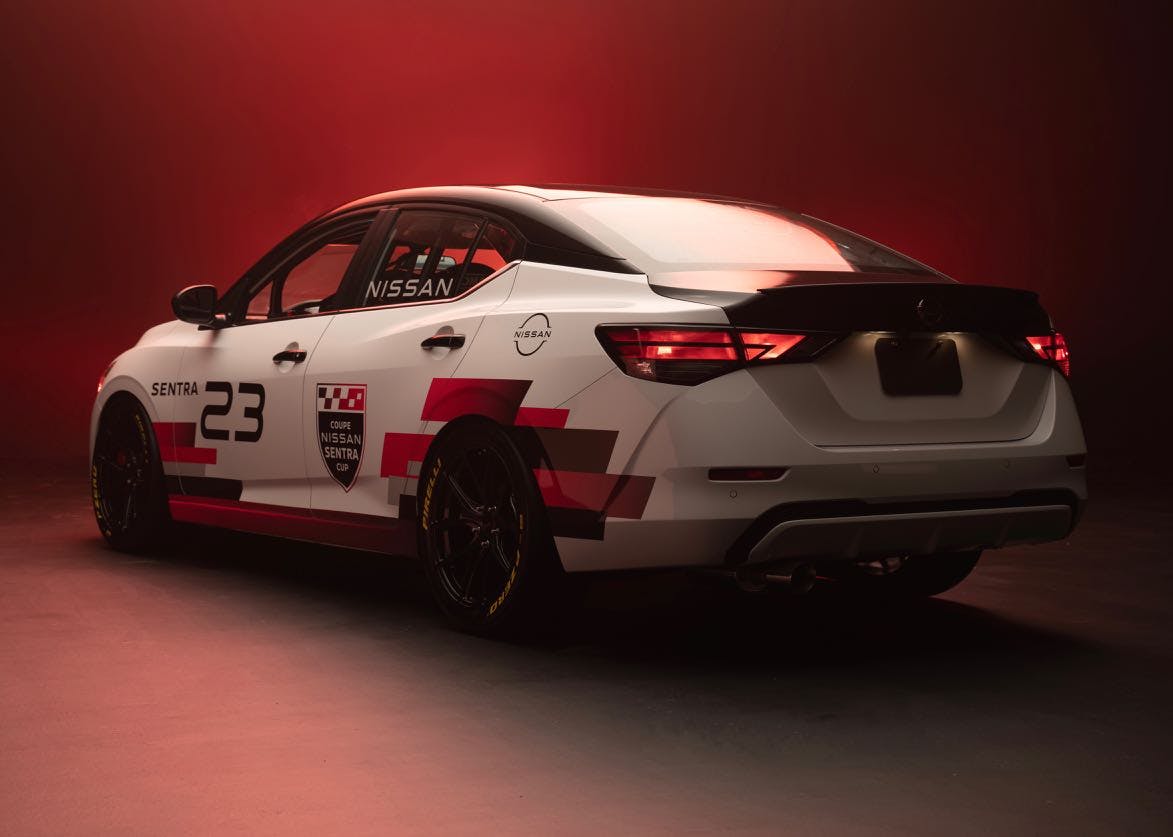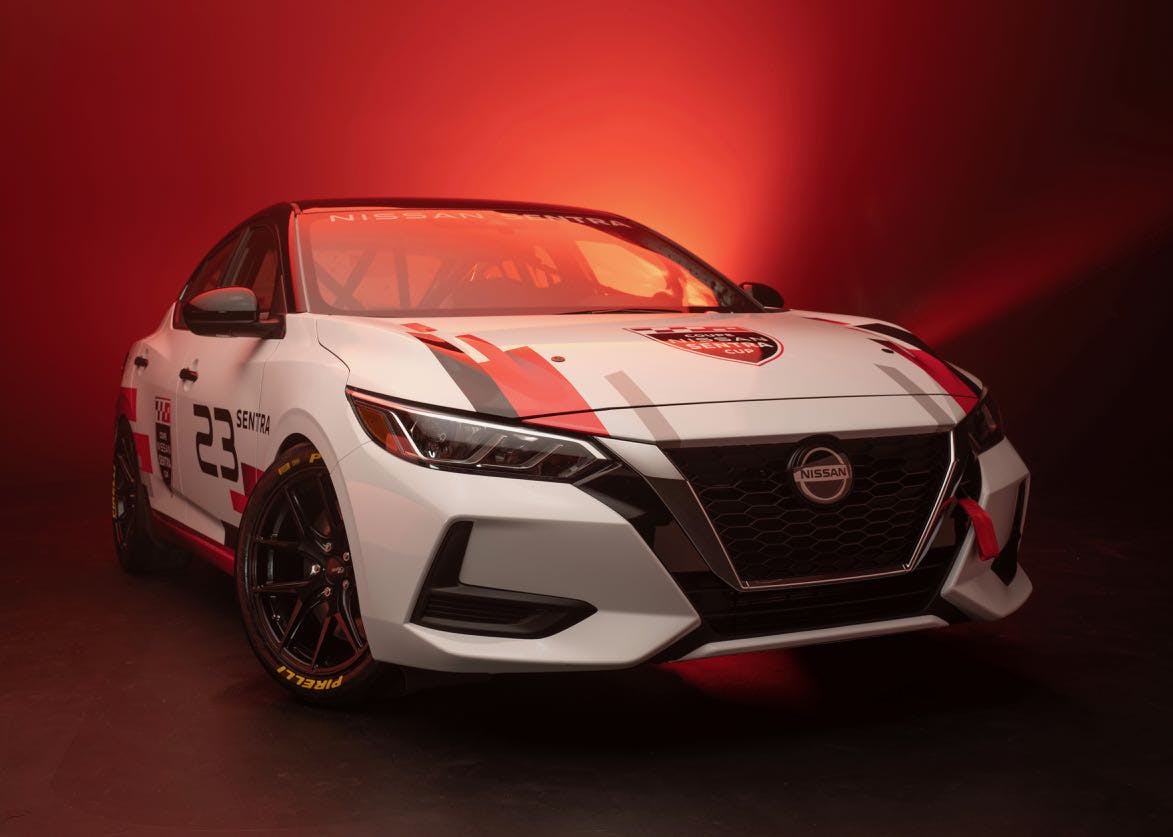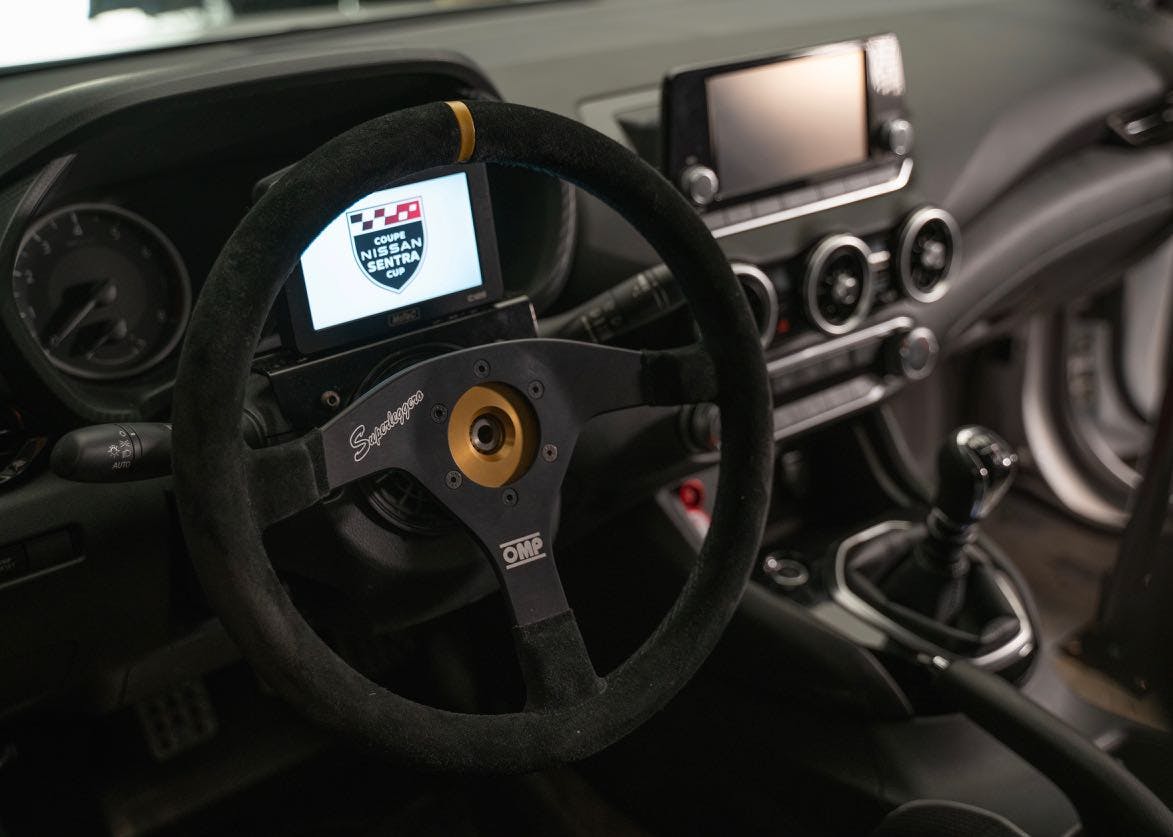Nissan Sentra Cup: Canada’s affordable one-make championship

I’ve always been attracted to single-make championships. Unlike Formula 1, in which results are arguably determined by the better car, the idea with a single-specification series is that all cars in it are equally prepared and driving talent rises to the top.
Over the years, I’ve competed in a number of these single-make events, including Viper Cup, MX-5, and Superlites in the Lucas Oil short track off-road racing series. My timing wasn’t right to compete in the legendary Canadian Honda Civic spec series, but when Nissan’s Micra Cup arrived in Canada, I was game.
After getting a taste of the championship by racing one of the media cars in the first two races of the championship, the following season I put together a program with the help of a Nissan dealer group when Micra Cup expanded to Ontario.

For all of the things I’ve done with cars, I’m best known for navigating my way through a violent start of a Nissan Micra Cup race. Perhaps you’ve seen it.
After the drop of the green flag, the field rounded the first corners and two crashes developed simultaneously: one entirely out of my view at the start of the field, and another immediately in front of my car. Micras were spinning, sliding, crashing into one another, and, like any good Michael Bay film, barrel-rolling to the side of the circuit. What makes the clip exciting is that I zigged and zagged my way through the ongoing crashes and emerged without a single scratch on my car.
Thankfully, none of the drivers were hurt, which is a testament to the safety of the Micra Cup car and to Motorsports in Action, the race shop that engineered, built, and installed the safety equipment.
That clip went viral around the world and sparked its own meme. As a driver, I took the opportunity to appear on television and on radio to talk about the safety of the Micra and how drivers can better use their vision to anticipate potential hazards in daily driving.
The one-make Nissan Micra Cup ran from 2015 through 2020 and was based on identically-prepared Nissan Micra S sub-compacts. Nissan manufactured the Micras in Mexico and imported to Canada, since we have a penchant for small, cheap cars. The entry-level Micra S road car sold for less than $10,000 in Canada and, in America, you’ll often see Mexican Micras if you live close to the border.
Even for a jaded racer like me, once a road car has been transformed into a race car, there’s no unseeing the metamorphosis. Any time I see a Micra, I see a racing car. That’s the kind of excitement that motorsport brings to road cars.

My Micra Cup championship run ended almost as abruptly as it started. On the second lap of the first race of the season, another driver decided to use my car as a brake. I’d been racing and teaching at Canadian Tire Motorsport Park for more than two decades, but I didn’t know there was a medical centre in pit lane until that day.
Nissan Canada discontinued the Micra road car in 2019, but the championship was so successful that it’s developed a new single-make series based on the latest Sentra and raised the game. The new Sentra is a massively important product for Nissan Canada, as well.
“The compact car segment is still the third-largest segment in Canada behind just pickup trucks and SUV sales for us,” Adam Paterson, Nissan Canada’s director of marketing, says, “so it’s hugely important for us.”
“I think having some excitement around the new Sentra, [and] showing that in an atmosphere of competition, is really going to allow Canadians to be drawn to the new car. I think that with very minor modifications [the Sentra Cup race car] will highlight the quality and the durability behind it. Our goal, from a market share perspective, is to, at minimum, double the share the Sentra,” Paterson says.
The Micra Cup car had a tall centre of gravity and every time I drove my car I had it on two wheels at least once, if not more during an on-track session. The inside front tire would spin with just a hint of throttle input, let alone when subjected to the aggressive driving required in a race. The Sentra Cup car has a lower centre of gravity, a wider track, a longer wheelbase, and more power. It carries more weight and has a heck of a lot more tire.
Given that the Sentra race car is based on a more modern platform, and that it produces forty more horsepower and pounds-feet of torque than Micra, Quebec-based Motorsports in Action has developed a more sophisticated race car. Though the Sentra is 400 pounds heavier than its Micra predecessor, it gets a nice horsepower bump to match: 145 hp, versus the Micra’s 109.
The Sentra Cup car is based around the Canada-only, entry-level Sentra S that comes equipped with a six-speed manual transmission. It’s fitted with the rear disc brakes of upmarket Sentras, but the front brake package is taken straight from the Nissan 370Z Nismo: Nissan/Akebono four-piston calipers clamp 355-mm rotors using Pagid race pads.
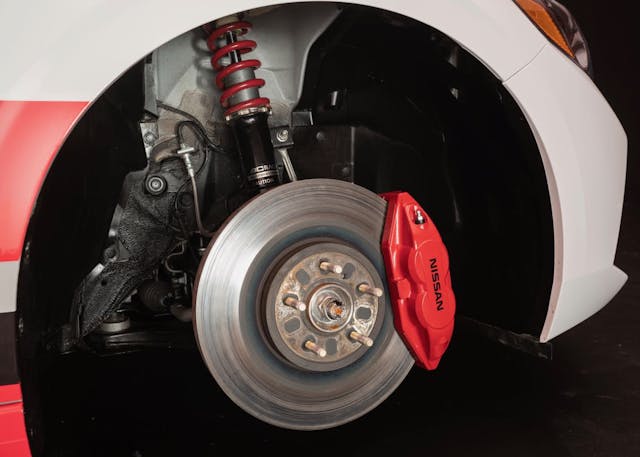
Similarly, the Sentra Cup rolls on 265-mm Pirelli slicks usually found on 300-hp TCR race cars. The spec sheet lists a few tricks not seen on Micras, such as a fully-adjustable coil-over suspension, an adjustable front anti-roll bar, adjustable camber plates by Motorsports in Action, a rearview camera, and a pit-lane speed limiter, which I can only assume is facilitated by the Motec engine control unit.
I suspect the Motec ECU was required to allow the Sentra’s drivetrain to run unfettered following the deletion of a number of systems not required for competition. Similar to what I’ve seen in GT4 and TCR race cars, it’s easier to operate a race car with a racing ECU rather than use a road car’s system that’s been coded to look for stability and traction control system inputs, for example.

An FIA-rated, six-point roll cage plus an OMP racing seat, six-point driver harness, and a proper fire suppression system round out driver safety equipment. Having used this safety gear to its fullest in my Micra Cup car, I can vouch for it.

The price of a ready-to-race Nissan Sentra Cup car is $39,999 (CAD), which is quite a step up from my $23,000 Micra race car. The Sentra Cup car is a full step up from the Micra and will be significantly quicker than the Micra, offering drivers a more competitive championship.
Jean-François Dumoulin, two-time winner of the Rolex 24 at Daytona, is responsible for the development of the Sentra Cup car’s dynamic package and he expects the new car to be easier to drive, at least to a point. When complete, the Sentra will be slightly quicker in a straight line than Micra, but it will have significantly more braking capacity and cornering grip. Plus, Dumoulin tells me, the series is going to give drivers some freedom for suspension setups. Most importantly, the inside front tire wheelspin problem that plagued the Micras has been eliminated. Dumoulin anticipates that the Sentra Cup car will be a half-dozen seconds quicker per lap than the old Micra Cup car. In racing terms, that’s the difference between Nissan 370Z and a GT-R.
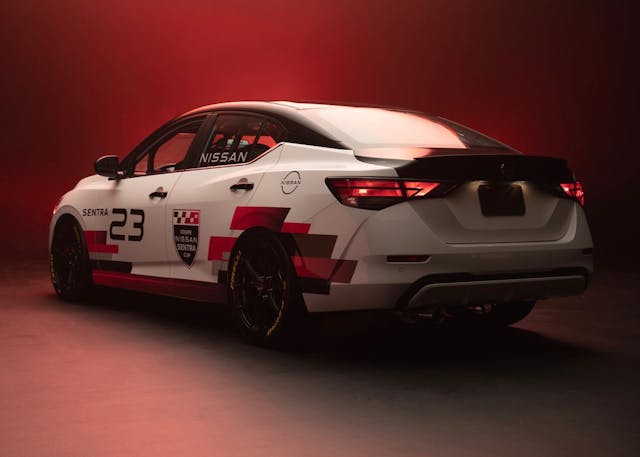
The Micra Cup was remarkably cost-effective to operate and, based on my experience, I’d anticipate Sentra Cup running costs to be much the same, save for the increase in tire costs. Series promoter Jacques Deshaies tells me that he expects a set of Sentra Cup Pirellis to cost a few hundred dollars more than a set of Micra tires. In order to be competitive, however, drivers will have to take advantage of a series rule that permits only one new set of tires per race weekend.
Deshaies says that Sentra Cup entrants are a different breed than Micra Cup drivers. With these Sentra race cars, the cost doesn’t seem to be a consideration. Nissan’s sold fifteen cars to date, with confirmed interest in another fifteen so far, with nary a complaint about the price.
I expect the Sentra Cup championship to offer drivers a racing experience that bridges the gap between entry-level competition and the TCR category. Plus, the way Nissan Canada supports and promotes the series gives it the necessary professional polish to attract higher-profile and better-funded drivers.
Deshaies says that, barring further COVID-19-related lockdowns in Canada, the 2021 calendar will include six events with two races taking place each weekend, making it a twelve-race championship. Furthermore, if you own a Micra Cup car, you can still go racing in the Class Micra category of the Nissan Sentra Cup.

As a racing fan and competitor, Sentra Cup promises to be an exciting and competitive championship, and it’s much more affordable than other options available in Canada. I’m looking forward to seeing Sentra Cup on track and perhaps returning as a driver. You never know …
During my tenure as a Micra Cup driver, there was tremendous interest in the championship from my American racing and media colleagues. Though it doesn’t offer the Micra, Nissan USA does indeed market the Sentra—save for the manual-transmission S model—which theoretically opens the door to a Sentra Cup championship in America.

Given the current sports car racing landscape in the United States, there is no question in my mind that there is a place for an American Sentra Cup championship. I can envision a fleet of Sentras tearing around circuits like Mid-Ohio and Road America and, even without market research, I’m willing to wager Nissan USA would find itself with full grids. Only time will tell, however, if that vision becomes reality.
For now, if you want exciting and affordable one-make racing, you’ll have to look north of the border to Canada’s Nissan Sentra Cup.

